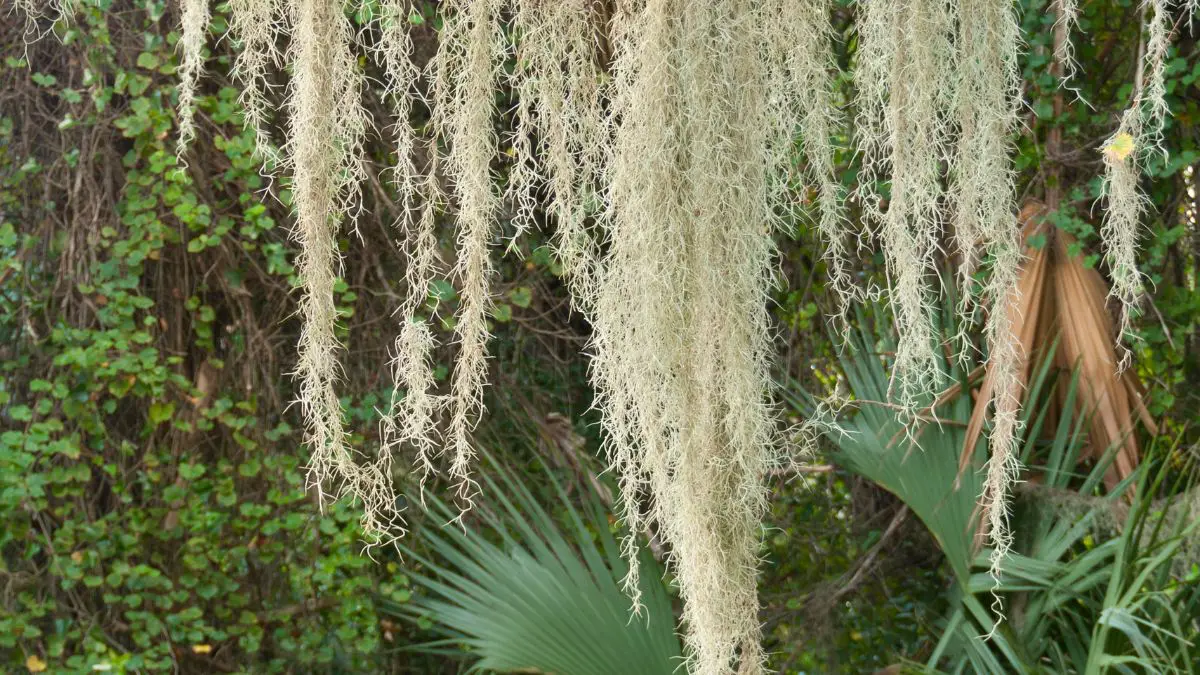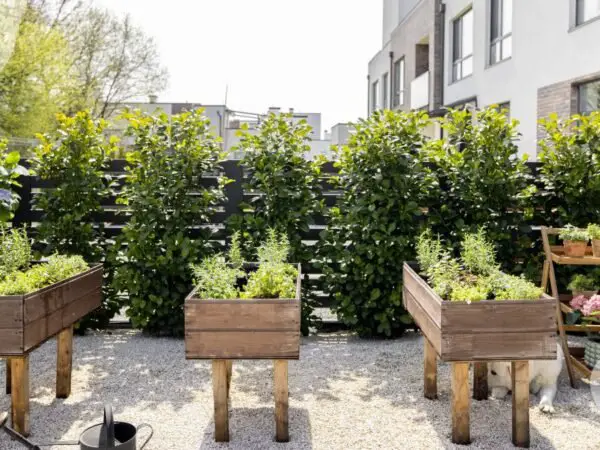With a little patience and care, growing moss can be an enriching and easy addition to your garden or home. An important note to consider here is that moss does best in moist, dark locations. This is what makes moss ideal for humid environments or locations with low light conditions.
If you want to grow moss, the key is creating an ideal habitat. Provide consistent moisture and select appropriate substrates for successful growth. Select from different types of moss, such as sheet moss or cushion moss. Choose according to your own taste and desired aesthetics.
With a few simple steps and some patience, you can create a lush, green carpet that adds a unique touch to your landscape. The next chapters will lead you step-by-step through the procedures involved in successfully growing and maintaining mosses.
Key Takeaways
- Moss is a fascinating, non-vascular plant that provides a little oasis of beautiful greens and textures. It is an important part of our ecosystems, helping to filter air and improving our biodiversity.
- If you want to grow moss indoors, you need to recreate its natural environment. Instead concentrate on achieving ideal light conditions, regular moisture, and potential soil pH.
- Selecting an appropriate substrate, whether soil, rock, or wood, significantly impacts moss growth and health, so experimenting with different materials is encouraged.
- Fortunately, it’s simple to grow more moss with different propagation methods. Experiment with spore cultivation, fragmentation, and making a moss slurry to help grow moss most effectively!
- Common challenges such as urban pollution and excessive foot traffic can stop moss from doing its thing. Proactive steps like implementing barriers and providing adequate air circulation go a long way in maintaining healthy moss.
- Follow these tips to maintain a thriving indoor moss garden so it remains healthy and attractive. This means paying attention to their watering needs, humidity, and light exposure.
Understanding Moss
Moss, particularly popular moss varieties like hair cap moss and rock cap moss, thrives in moist conditions, playing a crucial role in our ecosystems. It acts as a natural air filter, enhancing urban air quality by soaking up pollutants and releasing oxygen, making it an excellent choice for landscaping and planting areas.
The aesthetic qualities of moss contribute beautifully to interior decoration, providing a rich, soft green accent that complements ornamental plants in both residential and commercial spaces. By incorporating moss patches and moss sheets, gardeners can create stunning visual effects that enhance their outdoor and indoor environments.
What is Moss?
Moss is a non-vascular plant in the division Bryophyta. Unlike flowering plants, mosses do not have roots, instead using their surface tissues to absorb water directly from their environment.
This special adaptation helps them flourish in moist environments, making them important players in biodiversity and soil health. By stabilizing ground soil, moss works to combat erosion and improves the habitat for other microorganisms.
Types of Moss for Indoor Growth
Many moss species thrive indoors, including cushion moss (Leucobryum glaucum) and sheet moss (Hypnum spp.). Each variety has unique requirements.
Cushion moss, for example, likes a little more light, while sheet moss does best in darker areas. From a visual perspective, cushion moss is fuller and more compact, whereas sheet moss would look like a thick green rug.
Understanding these differences helps you choose the best species to fit your indoor environment. Moisture, shade, and acidic soil are the typical conditions that mosses favor, with pH levels below 5.5 considered optimal.
The optimal time for transplanting or propagating is early spring, when the weather is still moist. It can take a moss garden 12 to 18 months to fully establish, as they need to remain moist (particularly during the establishment phase).
Ideal Conditions for Growing Moss

Producing the ideal conditions for moss gardening to thrive is imperative, particularly when trying to recreate a natural environment. Moss varieties do best in consistently damp, shady areas with acidic soils. To maintain healthy moss patches, checking all of these conditions over time is critical.
1. Optimal Light Requirements
Moss grows healthiest in shady, indirect light. This is because direct exposure will dry out the delicate leaves, preventing growth. In environments where natural light is scarce, fluorescent lights work well to provide the illumination required for robust moss growth.
This strategy is a great way to recreate the dappled light characteristic to forest environments, which mosses prefer.
2. Moisture Levels for Success
Consistent moisture is key. Ideally, a misting spray bottle will help deliver that required moisture without waterlogging the dirt. Just be careful not to waterlog your moss, as this may cause the moss to rot.
By keeping an eye on humidity and maintaining the ideal conditions, you’ll provide your moss with the moisture it needs to thrive and add a beautiful touch to your space!
3. pH Preferences of Different Species
Soil pH has a very strong effect on moss health, with an ideal range of 5.0 to 6.0 being preferred. Soil acidity adjustment can be made to promote the growth of certain types of moss. For instance, incorporating acidic materials such as pine needles will naturally decrease pH and make conditions more favorable.
Knowing how soil acidity affects the vitality of moss is important in successfully growing moss.
Choosing the Right Substrate
An ideal substrate is vital for successful moss gardening, as creating healthy moss beds starts with providing proper moisture, nutrients, and stable conditions. Understanding your options for moss varieties can severely affect the health of moss.
1. Soil vs. Rock vs. Wood
- Soil Pros: Retains moisture well, provides nutrients. Cons: Can compact, leading to poor aeration.
- Rock Pros: Excellent drainage, supports certain moss types. Cons: May require additional nutrients, less moisture retention.
- Wood Pros: Natural habitat for many mosses, enhances humidity. Cons: Decomposes over time, may harbor pests.
Different substrates affect moisture retention and nutrient availability in different ways. A substrate half rock and half peat will provide a good compromise. The effect is amplified even more by adding charcoal.
Using a variety of materials can help create a more suitable planting base that caters to the mosses used.
2. Impact of Substrate on Growth
-
Substrate Affects Moss Growth Choosing the right substrate can make or break your moss’s growth rate and overall health. Plenty of drainage and aeration are key—mosses do best where moisture and air flow are adequately provided.
The more one tests different substrates, the better one becomes at knowing which combinations will get the desired results.
New Zealand Sphagnum Moss grows best with distilled water and daily attention. This further emphasizes the need to choose an appropriate substrate.
Propagation Techniques for Moss
Moss propagation presents some pretty simple techniques to ensure moss can be grown indoors with success. In fact, popular moss varieties are among the easiest plants to propagate, making them perfect for everyone from the budding gardener to the moss expert. Experimenting with new planting techniques helps each grower find what works best for their specific growing conditions.
1. Spore Cultivation Methods
Growing moss from spores requires you to harvest mature spores from existing moss species and disperse them onto suitable substrates. This technique allows for larger moss gardens to be created, bringing in different species.
Patience is the key word here, as spore germination may take 1-8 weeks or more. Giving your spores a consistent moisture level and shaded conditions will make it more likely that your spores will successfully grow.
2. Fragmentation Techniques
Fragmenting existing moss patches is yet another fruitful propagation technique. To achieve this, simply separate a healthy moss clump into smaller, manageable pieces.
Make sure these pieces are spread out over a surface they can root down into to be re-established. Utilizing fresh moss fragments leads to healthier progeny. Their increased vigor renders them better able to adjust to novel environments.
3. Using Slurry for Growth
Making a moss slurry is a much safer option when you need to cover wider areas, or work with vertical surfaces. Mix new moss with water and a little bit of buttermilk or yogurt.
This will result in a very thick slurry. As it can be spread directly like a coating to surfaces, it encourages rapid establishment. Slurry promotes fast-growing moss and allows it to bond to any application surface for an abundant, thriving appearance.
Common Challenges in Moss Cultivation
Moss cultivation, especially indoors, can be a bit tricky, so gardeners should be mindful of common challenges to promote healthy moss growth. By identifying these challenges and taking steps to address them beforehand, such as ensuring the right moss varieties are used, you can greatly improve the health and durability of your moss.
1. Urban Pollution Effects
In particular, urban environments can be harsh on moss due to exposure to pollutants like exhaust fumes and chemical residues. This pollution can prevent moss from flourishing and damage its fragile structure.
To combat pollution effects, growers should ensure clean air by keeping moss in well-ventilated spaces. They can invest in air purifiers, which filter out damaging particles. Producing an indoor environment that limits exposure to harmful pollutants is key in producing healthy moss gardens.
2. Foot Traffic Mitigation Strategies
Since moss is quite sensitive to physical pressure, it leaves the moss vulnerable in shared spaces. To mitigate the impact of foot traffic on moss, the establishment of clearly defined walking paths or the installation of temporary barriers can reduce trampling.
Low fencing can help delineate areas where foot traffic is not allowed. Establishing spaces using decorative stones is another good way to maintain those spaces. Educating others who use the area on the sensitivity of moss can help cultivate an appreciation for this special plant.
3. Overcoming Common Pitfalls
Common issues that many growers face are conditions like overwatering or not enough light, causing the moss to die off. Keep an eye on moisture levels to avoid these concerns.
Make sure to supply the right light environment tailored to the needs of your chosen moss species. By observing moss regularly and ensuring proper health, you can make real-time adjustments to your care techniques, creating optimal growth conditions and increasing longevity.
Maintenance Practices for Healthy Moss
With care and vigilance to the unique needs of moss varieties, it can thrive. Key operations center on controlling humidity levels, providing the right amount of natural light, and seasonal changes that keep the moss bed looking good year-round.
1. Watering and Humidity Control
- Water moss thoroughly and frequently enough to keep substrate consistently moist, never drenching.
- Either mist the moss with water each day or use an atomizer or fine mist setting on a spray bottle for even coverage.
- Avoid using chlorinated water; distilled or rainwater is preferable.
Humidity is perhaps the most important factor in moss health, especially for popular moss varieties like rock cap moss and hair cap moss. These moss species thrive in humid conditions, ideally between 40-70%, making a simple indoor humidity gauge essential for maintaining optimal conditions.
2. Light Management Over Time
Once our mosses are established, their lighting requirements can evolve. Continue to increase exposure by placing the container in brighter or shadier areas depending on how they are growing.
To avoid this, it helps to rotate moss containers every few weeks, allowing for even light distribution and avoiding lopsided growth. In the winter months, artificial lighting can be used to supplement growth. LED grow lights are an excellent way to supplement natural sunlight and promote healthy plant growth.
3. Seasonal Care Tips
That’s why having a seasonal care checklist is so valuable. During winter months, it’s important to water less frequently to avoid over-saturating due to decreased light levels.
During summer, you may want to mist more frequently due to faster evaporation. Temperature change will require other modifications as well. Be sure to ventilate properly during heat waves, for example.
Benefits of Growing Moss Indoors
Whether it’s the beauty of the moss varieties or its air-purifying abilities, the benefits of growing moss indoors are endless. Moss enchants with its breathtaking beauty and offers a unique alternative to traditional grass lawns. Beyond aesthetics, growing moss has a lot of practical benefits, making it a beautiful choice for anyone looking to improve their indoor environment.
1. Aesthetic Appeal and Interior Design
Regardless of its size or shape, moss has the power to turn any environment into a peaceful retreat. With its softness and deep green color, moss is a beautiful complement to conventional houseplants.
Artistic displays, like moss walls or terrariums, make striking centerpieces in living rooms or workplaces. A glass terrarium filled with different moss species is an eye-catching statement piece. Set it on your coffee table to add beauty to your decor!
Whether you’re going for minimalist, bohemian, or something in-between, the versatility of moss will help you express yourself through your home décor.
2. Environmental Contributions
In these ways, moss makes important contributions to ecological health. By absorbing carbon dioxide and releasing oxygen it helps create a healthier and more balanced atmosphere.
Moss acts as a natural air filter, minimizing common indoor air pollutants and allergens. Making moss a part of your home is a wonderful way to live sustainably, benefiting not only you but the environment.
3. Health Benefits of Indoor Moss
All of these benefits combined can result in improved health and well-being from having moss indoors. It brings a peaceful presence into your home, ideal for relieving stress and anxiety.
Moss naturally purifies the air, a huge plus for any indoor plant. This improvement increases quality of life, creating safer and more pleasant environments.
Conclusion
Whether indoors or outside, growing moss adds one-of-a-kind beauty to any area. If you provide the best conditions and care for it, you will enjoy an amazing green space that flourishes either inside your home or outside. Know what moss requires—from light levels to moisture content—and ensure you have a suitable substrate for a thriving biome. Learn easy propagation techniques to grow your moss garden, then address common issues with effective solutions. Ongoing care regular clean-ups and protection from trampling will ensure your moss stays fresh, colorful, and healthy.
Discover how incorporating moss can enhance your surroundings. As a natural means of pollution control, it improves air quality, beautifies surroundings, and provides a soothing environment. Take the first steps to grow moss successfully today. Moss can be delicate, so don’t be afraid to experiment with different types and techniques. Then sit back and watch your moss grow and thrive!
Frequently Asked Questions
How do I know if my environment is suitable for growing moss?
Moss grows best in dark, wet places with regular moisture, particularly in shady areas. Look for spots that provide some cover from direct sunlight, as it can dry moss sheets and hinder growth.
Can I grow moss indoors?
Yes! Indoor moss, such as popular moss varieties, grows best in terrariums or pots with bright, indirect sunlight. To promote vigorous growth, keep a moist substrate and provide very high humidity at all times.
What type of substrate is best for moss?
For optimal moss gardening, avoid heavy soil types that retain excess moisture, as they hinder moss growth.
How can I propagate moss?
The easiest way to propagate moss, such as popular moss varieties like hair cap moss, is to take small clumps and place them on a suitable surface, ensuring proper lighting, humidity, and moisture for growth.
What are common challenges in moss cultivation?
Moss can be sensitive to excessive sun exposure, arid conditions, and lack of appropriate substrate. Watch for too much or too little moisture, as well as direct or indirect light, which can affect moss varieties and growth habits.
How often should I water my moss?
How often should I water my moss bed? Water moss daily, or as needed to maintain a moist substrate. In drier conditions, mist it daily to maintain humidity and prevent drying out, especially for popular moss varieties.
What are the benefits of growing moss indoors?
What are the benefits of growing moss indoors? Not only is planting moss easy to care for, but it also assists in achieving proper humidity in the air.
Image Source: Paid image from CANVA




